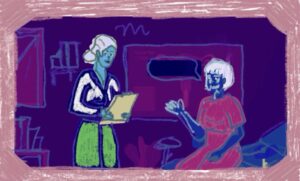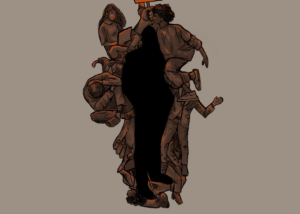Students will vote Monday for a new student government, the Yard. We cannot endorse it for three reasons.
In the proposed Yard Commons, club leaders would be required to organize themselves into nine clusters, and each cluster would send a representative to the Council. The Council, which would approve the budget for most student clubs, would include these nine clubs representatives, a representative from each class, the president and vice president of The Yard, a campus-wide issue advocate, four academic council representatives, two members of Interhall (the student government for residence life) and one representative for transfer students. Got all that?
One problem is that The Yard gives representation to a certain category of clubs?Yard supporters say the administration has mandated that media groups, volunteer organizations and arts groups continue to get their funds from specially appointed commissions. These groups would be excluded from what the Yard supporters say would be the focus of student activism.
Secondly, the Yard should not give vote in the budget process to students, club leaders or not, who aren’t elected by campus, or at least appointed by campus-wide officers. Furthermore, non-club members would lose class representation: the number of representatives falls from four to one or two.
The final concern is with the allocation process. At least 50 percent of student activities money will be distributed by students to student clubs?that’s the Direct Fund. Another 25 percent will be reserved to supplement clubs’ coffers. The final 25 percent may be allocated in parts by the Yard Council to both the Direct Fund and the reserves. But the reserves may not be enough for smaller clubs that get too few Direct funds. Students, with heavy time constraints, may be happier to quickly dish out funds to three groups they know than meticulously figure out what groups deserve their funds. The result is, however, a less than optimal result for the campus at large, since clubs are underfunded not because we don’t like them, but because there are constraints on our ability to learn about them.
The Yard should still press on, but now it is not ready.
Direct Fund. This reserve, Yard supporters argue, will support new clubs that are little known and that students may hesitate to fund because they have not seen in the organizations in action. The final 25 percent may be allocated in parts?by the chief legislative body, the Yard Council?to both the Direct Fund and the reserves.
The Yard has not convinced us that the reserves will support smaller clubs that may be receive too little money through the Direct Fund process to enable them to contribute to the campus good. This could result for a very sensible reason. Students, with heavy time constraints, may be happier to quickly dish out funds to three groups they know than meticulously figure out what 10 groups deserve their funds. The result is, however, a less than optimal result for the campus at large, since clubs are underfunded not because we don’t like them but because there are constraints on our ability to learn about them. Currently, money is allocated by a commission that is constitutionally required to do the research and allocate money with the social good in mind. The commission, we should note, is appointed by students’ elected leaders.
The Yard has done a fine job challenging us to figure out how students can get more involved. But we cannot endorse it.




